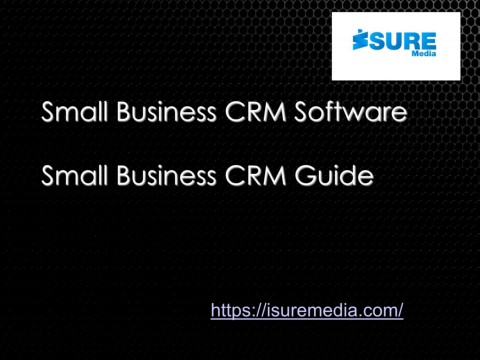
Unlocking Growth: A Deep Dive into CRM Marketing Performance & Strategies
In today’s fast-paced business environment, understanding and optimizing your CRM (Customer Relationship Management) marketing performance is no longer a luxury; it’s a necessity. It’s the engine that drives customer engagement, boosts sales, and fosters long-term loyalty. This comprehensive guide dives deep into the world of CRM marketing performance, equipping you with the knowledge and strategies you need to excel. We’ll explore what CRM marketing performance is, why it matters, key metrics to track, how to analyze your data, and, most importantly, practical tips and techniques to improve your results. Get ready to transform your marketing efforts and achieve remarkable growth!
What is CRM Marketing Performance?
At its core, CRM marketing performance refers to the effectiveness of your marketing activities within your CRM system. It’s about leveraging the power of your customer data to create targeted campaigns, personalize customer experiences, and ultimately, drive conversions and revenue. It’s not just about sending out emails; it’s about building meaningful relationships with your customers at every stage of their journey.
Think of it this way: your CRM is the central nervous system of your marketing efforts. It houses all the critical information about your customers – their demographics, purchase history, preferences, and interactions with your brand. CRM marketing performance, therefore, is the measure of how well you utilize this data to achieve your marketing objectives.
Why CRM Marketing Performance Matters
The benefits of focusing on CRM marketing performance are numerous and far-reaching. Here’s why it should be a top priority for your business:
- Enhanced Customer Understanding: CRM systems provide a 360-degree view of your customers, allowing you to understand their needs, preferences, and behaviors better. This deeper understanding enables you to tailor your marketing messages and offers for maximum impact.
- Improved Customer Engagement: By personalizing your interactions, you can create more engaging and relevant experiences for your customers. This leads to higher open rates, click-through rates, and conversions.
- Increased Sales and Revenue: Targeted marketing campaigns, lead nurturing, and personalized recommendations all contribute to increased sales and revenue.
- Boosted Customer Loyalty: When customers feel understood and valued, they are more likely to remain loyal to your brand. CRM marketing helps you build stronger customer relationships and reduce churn.
- Optimized Marketing ROI: By tracking key metrics and analyzing your performance, you can identify what’s working and what’s not. This allows you to optimize your marketing spend and maximize your return on investment (ROI).
- Streamlined Marketing Processes: CRM systems automate many marketing tasks, such as email marketing, lead scoring, and segmentation, freeing up your team to focus on more strategic initiatives.
Key Metrics to Track for CRM Marketing Performance
To effectively measure and improve your CRM marketing performance, you need to track a variety of key metrics. Here are some of the most important ones:
- Customer Acquisition Cost (CAC): This metric measures the cost of acquiring a new customer. It’s calculated by dividing your total marketing and sales expenses by the number of new customers acquired. A lower CAC indicates greater efficiency.
- Customer Lifetime Value (CLTV): CLTV predicts the total revenue a customer will generate throughout their relationship with your business. A higher CLTV indicates that your customers are more valuable and that your marketing efforts are successful in building long-term relationships.
- Conversion Rate: This is the percentage of leads or prospects who convert into customers. It’s a critical metric for measuring the effectiveness of your marketing campaigns and sales processes.
- Click-Through Rate (CTR): CTR measures the percentage of people who click on a link in your email or ad. A higher CTR indicates that your content is engaging and relevant to your audience.
- Open Rate: This is the percentage of people who open your email. It’s an indicator of the effectiveness of your subject lines and the overall appeal of your email content.
- Bounce Rate: Bounce rate measures the percentage of emails that are not delivered to the recipient’s inbox. A high bounce rate can indicate issues with your email list or your email delivery system.
- Lead Conversion Rate: This metric tracks the percentage of leads that convert into qualified prospects. It’s a measure of the effectiveness of your lead nurturing efforts.
- Return on Investment (ROI): ROI measures the profitability of your marketing campaigns. It’s calculated by dividing the net profit from a campaign by the cost of the campaign.
- Customer Churn Rate: This metric measures the percentage of customers who stop doing business with your company over a given period. A lower churn rate indicates that your customer relationships are strong.
- Website Traffic: Monitoring website traffic, including page views, unique visitors, and time on site, provides valuable insights into the effectiveness of your marketing efforts in driving traffic to your website.
How to Analyze Your CRM Marketing Performance Data
Once you’ve started tracking your key metrics, the next step is to analyze the data to gain insights and identify areas for improvement. Here’s a step-by-step approach:
- Gather Your Data: Collect data from your CRM system, email marketing platform, website analytics, and other relevant sources.
- Organize Your Data: Structure your data in a clear and organized format, such as a spreadsheet or dashboard.
- Identify Trends and Patterns: Look for trends and patterns in your data. Are there any correlations between your marketing activities and your key metrics?
- Segment Your Data: Segment your data by customer demographics, behavior, and other relevant factors. This can help you identify which segments are performing well and which ones need improvement.
- Compare Your Performance to Benchmarks: Compare your performance to industry benchmarks or your own historical data to see how you’re doing.
- Identify Areas for Improvement: Based on your analysis, identify areas where you can improve your CRM marketing performance.
- Develop Actionable Insights: Translate your data analysis into actionable insights. What specific changes can you make to improve your results?
- Document Your Findings: Document your findings and share them with your team. This will help you track your progress and make data-driven decisions.
Strategies to Improve Your CRM Marketing Performance
Now that you understand the importance of CRM marketing performance and how to analyze your data, let’s dive into some practical strategies to improve your results:
1. Data Quality and Hygiene
The foundation of any successful CRM marketing strategy is clean, accurate, and up-to-date data. Poor data quality can lead to wasted marketing efforts, inaccurate reporting, and a negative customer experience. Here’s how to ensure your data is top-notch:
- Regular Data Cleansing: Implement a regular data cleansing process to remove duplicate records, correct errors, and update outdated information.
- Data Validation: Use data validation rules to ensure that new data is entered correctly.
- Data Enrichment: Enrich your customer data with information from third-party sources to gain a more complete understanding of your customers.
- Data Governance: Establish clear data governance policies and procedures to ensure that your data is managed consistently and accurately.
2. Segmentation and Targeting
One of the most powerful features of CRM marketing is the ability to segment your audience and target them with personalized messages. Segmentation allows you to tailor your marketing efforts to specific customer groups, increasing the relevance and effectiveness of your campaigns. Consider these segmentation strategies:
- Demographic Segmentation: Segment your audience based on age, gender, location, income, and other demographic factors.
- Behavioral Segmentation: Segment your audience based on their online behavior, such as website activity, purchase history, and email engagement.
- Psychographic Segmentation: Segment your audience based on their values, interests, and lifestyles.
- RFM Analysis: Use RFM (Recency, Frequency, Monetary Value) analysis to segment your customers based on their purchase behavior.
- Personalized Content and Offers: Create personalized content and offers based on your customer segments.
3. Email Marketing Optimization
Email marketing is a cornerstone of CRM marketing. Optimizing your email campaigns can significantly improve your engagement rates, conversions, and ROI. Here are some best practices:
- Compelling Subject Lines: Craft subject lines that grab attention and entice your audience to open your emails. A/B test different subject lines to see what works best.
- Personalized Email Content: Personalize your email content with the recipient’s name, purchase history, and other relevant information.
- Mobile-Responsive Design: Ensure your emails are mobile-friendly, as most people read their emails on their smartphones.
- Clear Call-to-Actions (CTAs): Include clear and concise CTAs that prompt your audience to take the desired action.
- A/B Testing: Regularly A/B test different elements of your emails, such as subject lines, content, and CTAs, to optimize your performance.
- Segmentation for Email Campaigns: Segment your email lists to send targeted messages.
- Email Automation: Set up automated email sequences, such as welcome emails, abandoned cart emails, and post-purchase emails.
4. Lead Nurturing
Lead nurturing is the process of building relationships with potential customers throughout the sales funnel. It involves providing valuable content and information to guide leads through the buying process. Here’s how to implement effective lead nurturing:
- Create Valuable Content: Develop high-quality content, such as blog posts, ebooks, webinars, and case studies, that addresses your audience’s needs and interests.
- Implement Lead Scoring: Use lead scoring to identify qualified leads and prioritize your sales efforts.
- Automated Email Sequences: Set up automated email sequences to nurture leads and guide them through the sales funnel.
- Personalized Communication: Personalize your communication with leads based on their behavior and interests.
- Track Lead Progress: Track the progress of your leads through the sales funnel and identify any bottlenecks.
5. Marketing Automation
Marketing automation involves using software to automate repetitive marketing tasks, freeing up your team to focus on more strategic initiatives. Here are some ways to leverage marketing automation:
- Automated Email Campaigns: Automate your email campaigns, such as welcome emails, lead nurturing sequences, and abandoned cart emails.
- Lead Scoring and Routing: Automate lead scoring and routing to prioritize leads and ensure they are assigned to the appropriate sales representatives.
- Personalized Website Experiences: Use marketing automation to personalize website experiences based on customer behavior and preferences.
- Social Media Automation: Automate social media posting and engagement to save time and increase your reach.
- Workflow Automation: Automate workflows for tasks such as customer onboarding, support requests, and sales follow-ups.
6. Customer Journey Mapping
Customer journey mapping is the process of visualizing the steps a customer takes when interacting with your brand. This helps you understand the customer experience and identify opportunities to improve it. Here’s how to create effective customer journey maps:
- Define Your Customer Personas: Create detailed customer personas to represent your target audience.
- Map the Customer Journey: Map the steps a customer takes from the initial awareness stage to the final purchase and beyond.
- Identify Touchpoints: Identify all the touchpoints where customers interact with your brand, such as your website, social media, and email.
- Analyze the Customer Experience: Analyze the customer experience at each touchpoint and identify any pain points or areas for improvement.
- Optimize the Customer Journey: Optimize the customer journey to create a seamless and engaging experience.
7. Integration and Technology
Ensure your CRM integrates seamlessly with other marketing tools and platforms. This allows for data flow and a unified customer view. Consider these integrations:
- Email Marketing Platforms: Integrate your CRM with your email marketing platform to automate email campaigns and track performance.
- Website Analytics: Integrate your CRM with your website analytics platform to track customer behavior and personalize website experiences.
- Social Media Platforms: Integrate your CRM with your social media platforms to monitor social media activity and engage with your customers.
- Sales Automation Tools: Integrate your CRM with sales automation tools to streamline your sales processes and improve sales productivity.
- Marketing Automation Platforms: Integrate your CRM with marketing automation platforms to automate your marketing campaigns and personalize customer experiences.
8. Continuous Testing and Optimization
The world of marketing is constantly evolving, so continuous testing and optimization are essential for staying ahead of the curve. Regularly test different elements of your campaigns, such as subject lines, content, and CTAs, to see what works best. Analyze your results and make adjustments as needed. Here’s a good practice:
- A/B Testing: Regularly A/B test different elements of your campaigns, such as subject lines, content, and CTAs, to optimize your performance.
- Monitor Your Metrics: Continuously monitor your key metrics to track your progress and identify any areas for improvement.
- Analyze Your Data: Analyze your data to gain insights and identify trends and patterns.
- Make Data-Driven Decisions: Make data-driven decisions to improve your marketing performance.
- Stay Up-to-Date: Stay up-to-date with the latest marketing trends and best practices.
Challenges in CRM Marketing Performance
While CRM marketing offers significant benefits, it’s not without its challenges. Being aware of these challenges can help you proactively address them and improve your chances of success.
- Data Silos: Data silos can hinder your ability to get a complete view of your customers. Ensure that your CRM integrates with all your other marketing tools and platforms.
- Data Quality Issues: Poor data quality can lead to inaccurate reporting and wasted marketing efforts. Implement a data cleansing process and data validation rules to ensure your data is accurate and up-to-date.
- Lack of Integration: Without proper integration, data can’t flow seamlessly between systems, leading to inefficiencies. Ensure your CRM integrates with your other marketing tools.
- Complexity: CRM systems can be complex, and it can take time and effort to learn how to use them effectively. Provide adequate training to your team and invest in a CRM system that is user-friendly.
- Resistance to Change: Some team members may resist adopting new CRM marketing strategies. Communicate the benefits of CRM marketing and provide training and support to overcome this resistance.
- Lack of Resources: CRM marketing can require significant resources, including time, money, and personnel. Make sure you have the resources you need to implement your CRM marketing strategies effectively.
- Privacy Concerns: You must comply with data privacy regulations, such as GDPR and CCPA. Ensure that your CRM marketing practices are compliant with these regulations.
Conclusion: Embrace the Power of CRM Marketing Performance
CRM marketing performance is a critical component of any successful marketing strategy. By understanding the key metrics, implementing effective strategies, and continually optimizing your efforts, you can unlock significant growth and build lasting customer relationships. Remember, it’s not just about the technology; it’s about the people and the processes that drive your marketing success. By focusing on data quality, segmentation, personalization, and continuous improvement, you can transform your marketing efforts and achieve remarkable results. Embrace the power of CRM marketing performance and watch your business thrive!
By implementing the strategies and best practices outlined in this guide, you can transform your CRM marketing efforts and achieve remarkable results. Don’t be afraid to experiment, test, and learn. The key to success is continuous improvement and a relentless focus on delivering value to your customers.


